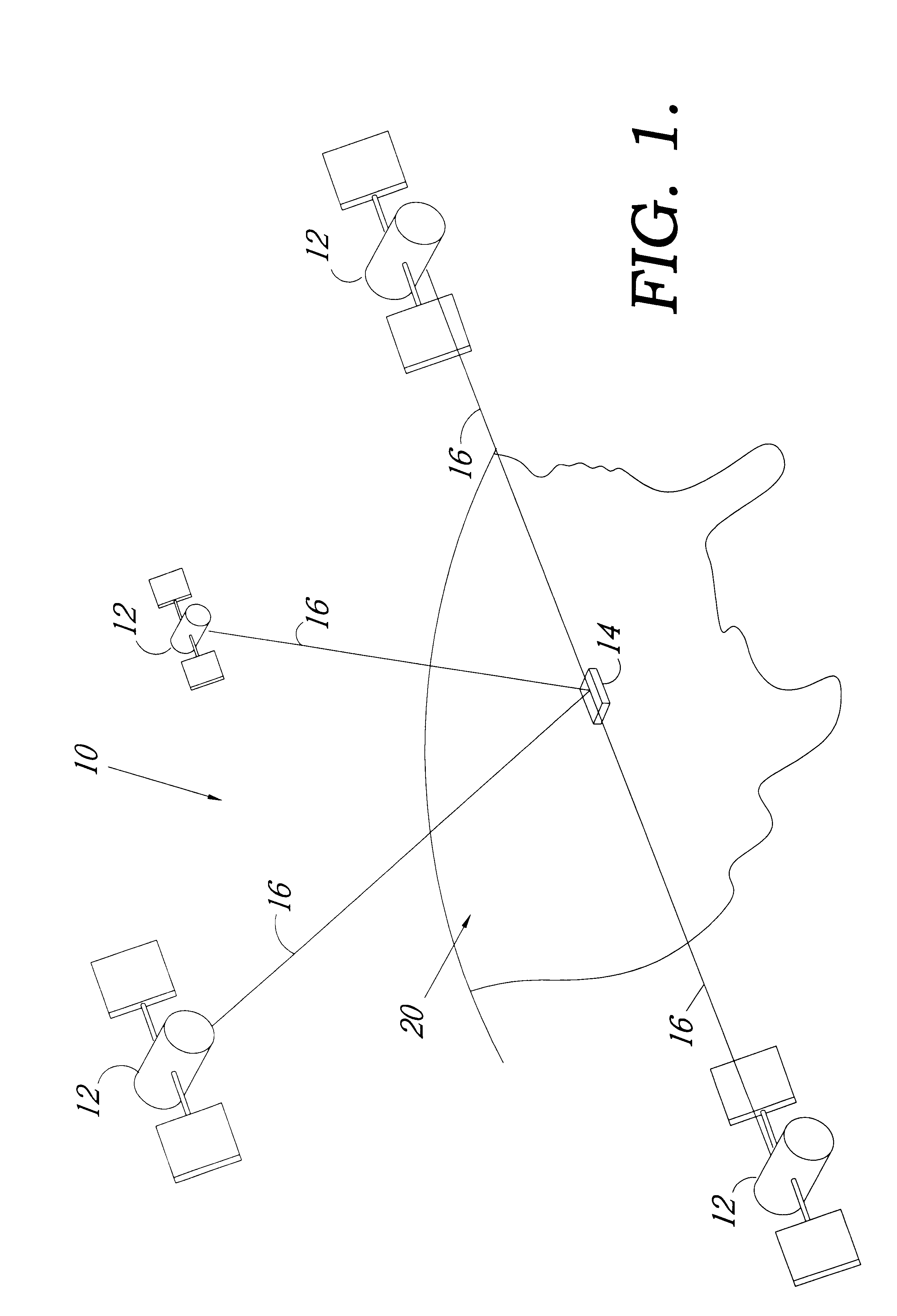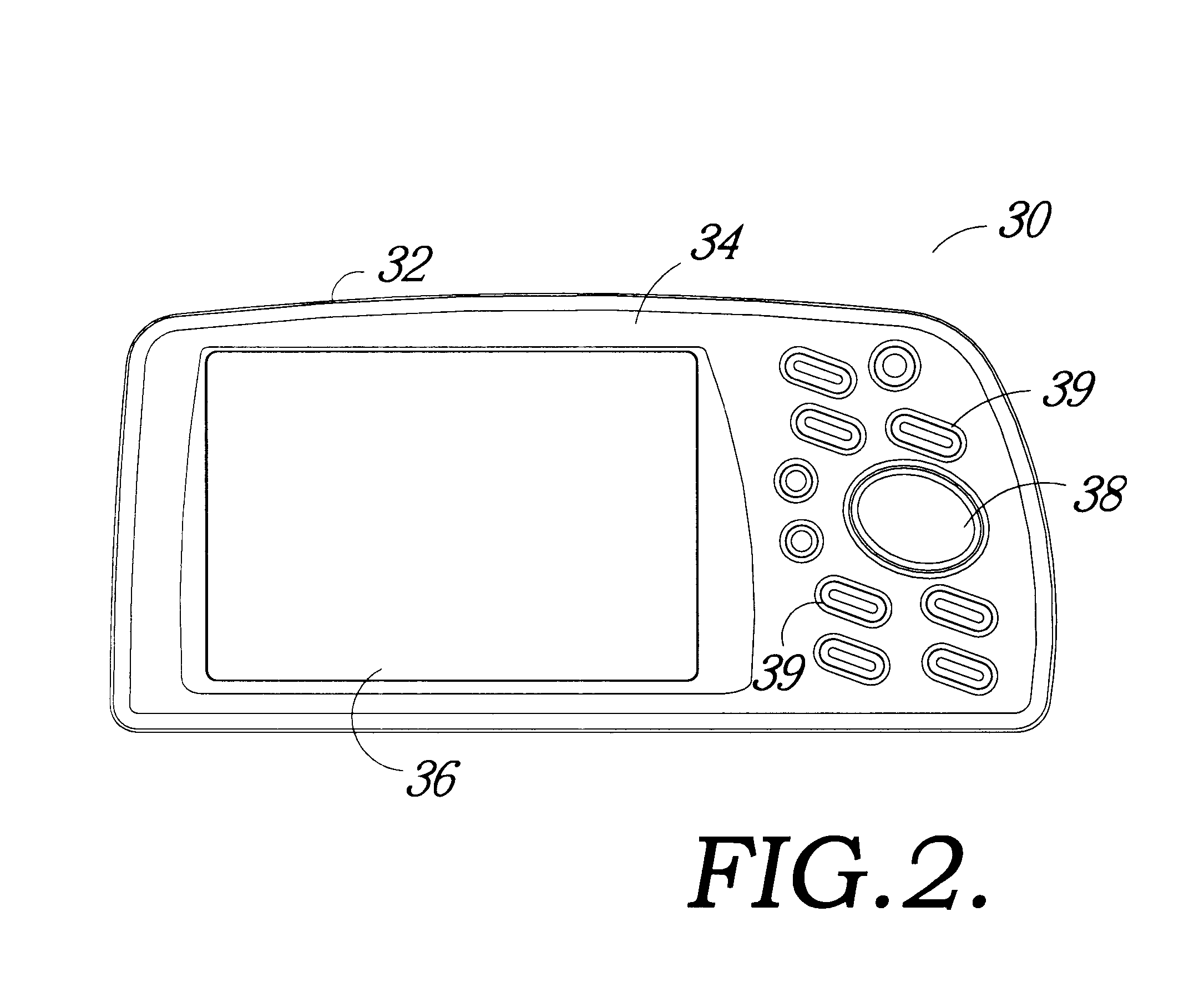Method and apparatus for storing cartographic route data
a cartographic route and data technology, applied in the field of storage of geographic feature data, can solve the problems of high cost, increased system cost, and high cost of route planning system memory storage spa
- Summary
- Abstract
- Description
- Claims
- Application Information
AI Technical Summary
Benefits of technology
Problems solved by technology
Method used
Image
Examples
Embodiment Construction
For a better understanding of the present invention, reference may be had to the following detailed description taken in conjunction with the appended claims and accompanying drawings. In essence, the present invention enables an electronic navigational thoroughfare planning device to calculate the distance between a vehicle's current location to an established destination along an established thoroughfare. Utilizing global positioning systems (GPS) data and internal memory, the navigational device implements a three-level hierarchy for storing, recalling and processing navigational and graphical data.
FIG. 1 is a representative of a GPS system, denoted generally by reference numeral 10. A plurality of satellites 12 are in orbit about the Earth 20. The orbit of each satellite 12 is not necessarily synchronous with the orbits of other satellites 12 and, in fact, is likely asynchronous. A GPS receiver device 14 of the present invention is shown receiving spread spectrum GPS satellite s...
PUM
 Login to View More
Login to View More Abstract
Description
Claims
Application Information
 Login to View More
Login to View More - R&D
- Intellectual Property
- Life Sciences
- Materials
- Tech Scout
- Unparalleled Data Quality
- Higher Quality Content
- 60% Fewer Hallucinations
Browse by: Latest US Patents, China's latest patents, Technical Efficacy Thesaurus, Application Domain, Technology Topic, Popular Technical Reports.
© 2025 PatSnap. All rights reserved.Legal|Privacy policy|Modern Slavery Act Transparency Statement|Sitemap|About US| Contact US: help@patsnap.com



